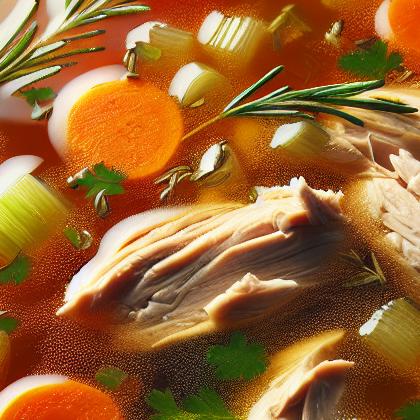Chicken Broth

Leftover cooked meat, such as that remaining on poultry carcasses, is often used along with the bones of the bird or joint. Fresh meat makes a superior stock, and cuts rich in connective tissue such as shin or shoulder of beef or veal are commonly recommended, either alone or added in lower proportions to the remains of cooked poultry, to provide a richer and fresher-tasting stock. Quantities recommended are in the ratio of 1 part fresh meat to 2 parts water. Pork, although a popular base for stock in Chinese cuisine is considered unsuitable for stock in European cooking due to its greasiness (although 19th-century recipes for consomme and traditional aspic included slices of mild ham), and mutton was traditionally avoided due to the difficulty of avoiding the strong tallowy taint imparted from the fat.
Chicken broth Pairs With:

Chicken broth Properties:
| Food Property | Type | Description |
|---|---|---|
| Flavor Profile | Umami | savory taste often described as meaty or brothy |
| Salty | containing a salty taste | |
| Texture | Moisture | liquid content of the broth |
| Nutritional Value | Micronutrients | vitamins and minerals present in the broth |
| Aroma | Volatile Compounds | compounds that contribute to the aroma of the broth |
| Chemical Composition | Water Activity (aw) | the amount of free water available in the broth |
| Cooking Behavior | Heat Conductivity | how well the broth conducts heat when cooking with it. |
Food Pairing App - Version 1.2.0
